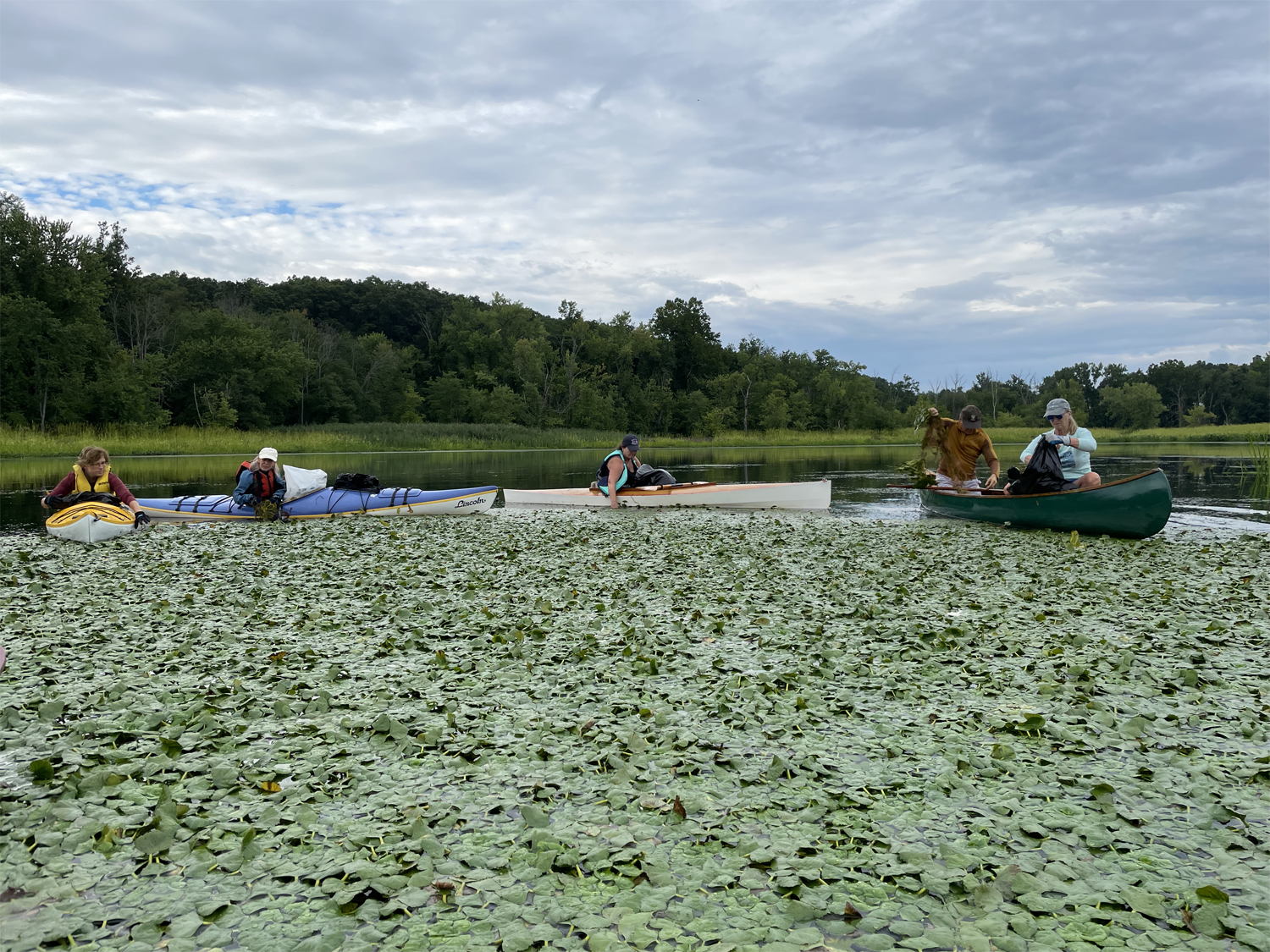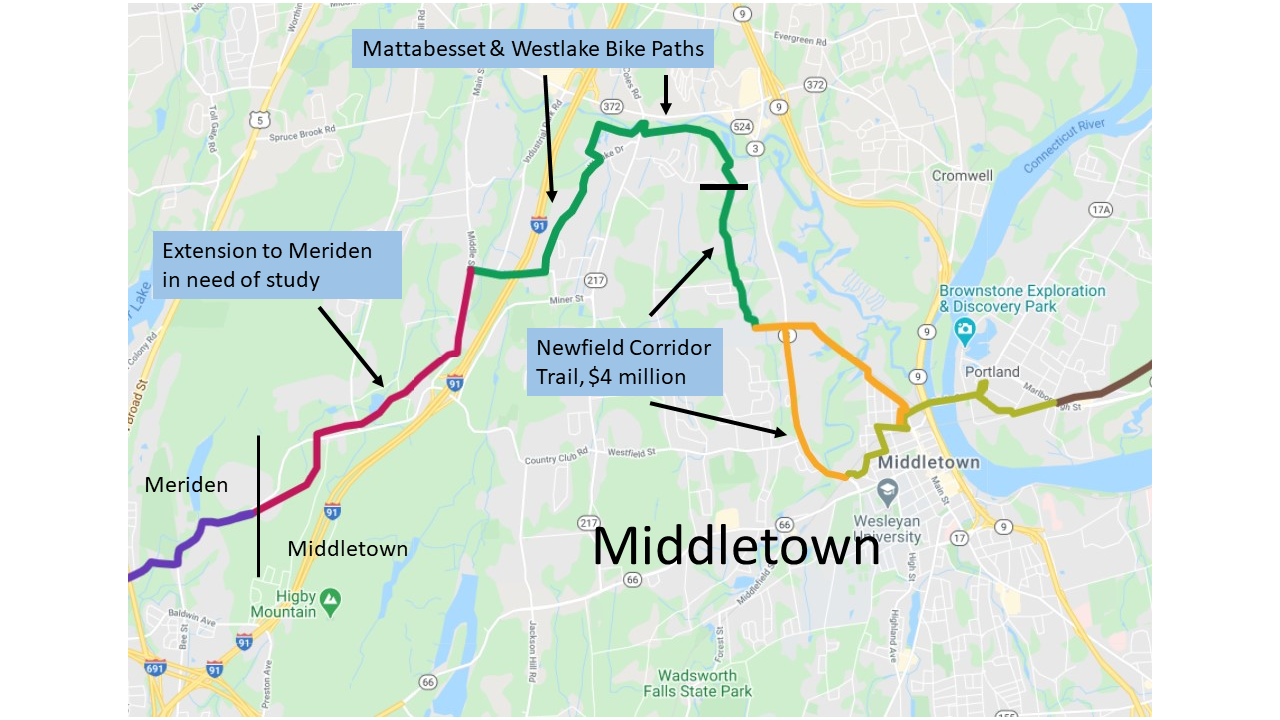The proliferation of invasive plants such as water chestnut and hydrilla in the Connecticut River, its tributaries, and local ponds has led to more common use of EPA-approved herbicides by government agencies such as the U.S. Army Corps of Engineers (USACE) and the U.S. Fish and Wildlife Service (FWS).

Paddlers work on a thick mat of water chestnut plants. If we can pull out the plants, the challenge becomes how to carry them, and then where to dispose of them.
The Jonah Center has asked these agencies, and others, for advice on how best to manage the water chestnut infestation in the Mattabesset River (Floating Meadows). The message we have heard is consistent. Hand-pulling is best where it is feasible. But there are some shallow areas with dense, stubborn infestations where hand-pulling by paddlers is not effective. Such areas represent a small percentage of the total surface area, but the seeds from these remote patches keep germinating in deeper areas, producing more patches that hand-pullers face each year. Every year, the seed bank in these coves and creeks grows. Continue reading














 The Jonah Center’s most far-reaching project — to connect the 2 longest multi-use trails in Connecticut — has been awarded 3 grants: a $315,000 route study grant by CT DOT in February 2022; a $500,000 grant by the state bond commission in April 2022; and a $2 million grant by the bond commission in October 2023. We thank Senator Matt Lesser whose leadership and advocacy has enabled this progress and funding. (Please note that none of these funds pass through or benefit the Jonah Center.) These grants will allow the project to proceed from route study (which is now underway) to design and construction work. The most recent $2 million grant is intended to be used as state & local matching funds for $8 million in federal transportation funds to be applied for in the future. In short, we are well on our way to making the connector route a reality.
The Jonah Center’s most far-reaching project — to connect the 2 longest multi-use trails in Connecticut — has been awarded 3 grants: a $315,000 route study grant by CT DOT in February 2022; a $500,000 grant by the state bond commission in April 2022; and a $2 million grant by the bond commission in October 2023. We thank Senator Matt Lesser whose leadership and advocacy has enabled this progress and funding. (Please note that none of these funds pass through or benefit the Jonah Center.) These grants will allow the project to proceed from route study (which is now underway) to design and construction work. The most recent $2 million grant is intended to be used as state & local matching funds for $8 million in federal transportation funds to be applied for in the future. In short, we are well on our way to making the connector route a reality.